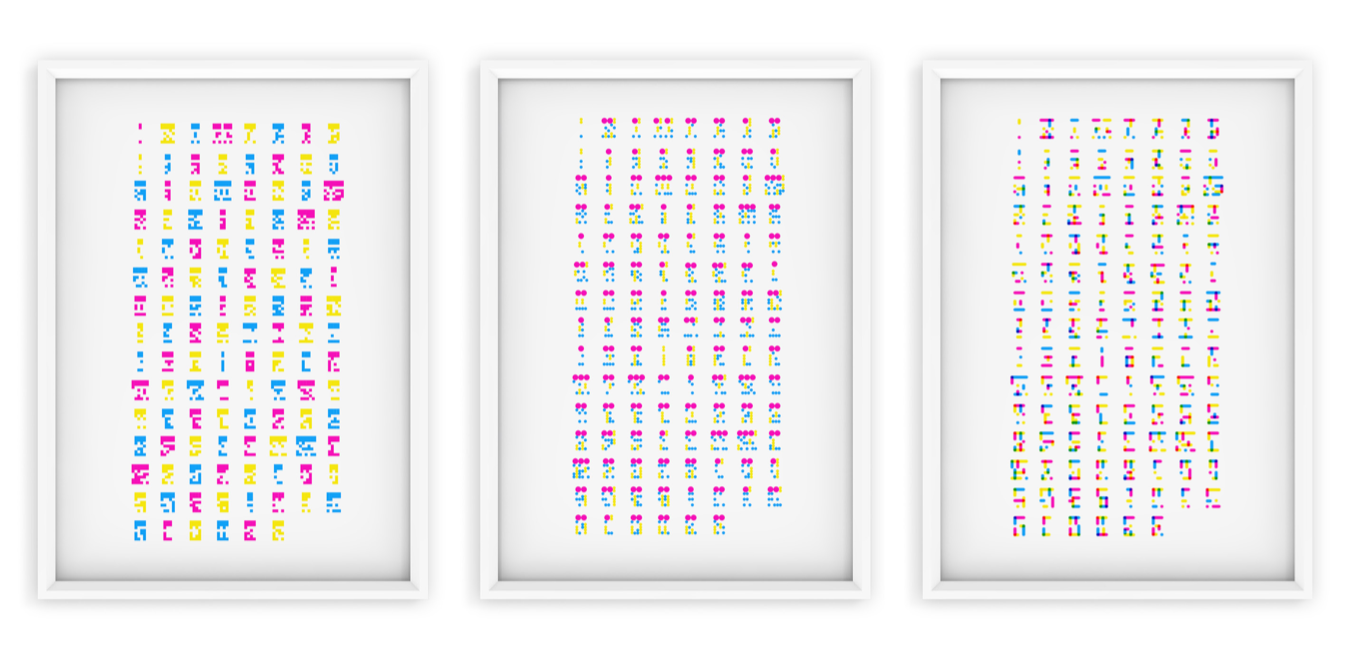toki pona
2020
Interactive
I am interested in globalization and how it shapes modern society, written language, and visual vernaculars. To do this, I implement speculative languages like toki pona to experiment with (letter)form, metalanguage, computation, and image. This language is posited as a future language to eliminate the obstacles caused by language in international communication so that people can quickly interpret information in an unfamiliar context. My thesis work focuses on developing a process in which to examine various modes of communication and future forms of written language. In synthesizing languages of the past and present, both speculative and the applied, I am developing an understanding of the potential of universal languages. I use these communication methods as a means of informing my work to various degrees.

Poster
For my first experiment with the future language, I used a picture language. According to the meaning of the words toki pona, I tried to use
icon emojis and Chinese hieroglyphs, as ideographic characters evolved from hieroglyphs. The use of comparison and combination methods finally forms an image-based language that is easy to recognize and remember. For words with a more abstract meaning, I used ab-
stract graphics to represent them.

Experiment with graphs

Poster
The second direction of my thesis translates words into visual language in a mathematical way via binary translation of the fourteen letters
used by toki pona. Math describes the way the world works and math literacy is called numeracy. Binary is a widely used universal language
in mathematics and computers. Numeracy is the same across all cultures. I also experimented with color as a component of meaning in the
development of this potential future language.

Different visions for words![]() Animation Screenshot
Animation Screenshot
 Animation Screenshot
Animation ScreenshotSound, my third example of a potential universal language, can be used to express things that seem to go beyond words. Beyond rhythm we
respond to different combinations of notes in different ways. I try to map the letters that make up the language into different sounds. When
the sound of the word is combined with an image-based language the visual material promotes a materialization of the sense of hearing,
enabling people to grasp meaning more intuitively and holistically. Music, sound effects, and the aesthetics of sound provide the viewer with
another way of interpreting the letters/language/symbols.

Poster
Body language is the fourth major “universal language” I wanted to experiment with. The human body expresses different meanings through
different postures and poses, and I aim to perform machine learning based on the collection of a large amount of pose data. When the pose
is recognized by the camera, a corresponding phrase will appear on the screen, which can establish people-to-people or people-to-machine
communication.